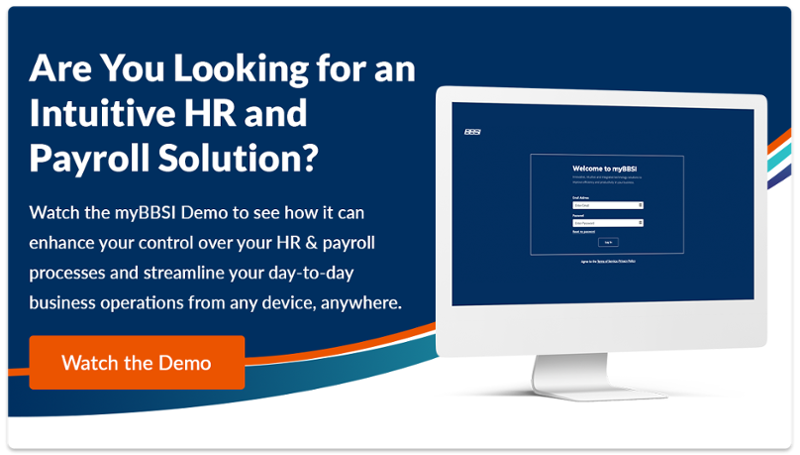
How to Properly Manage Your Employer Payroll Taxes
Managing payroll taxes is an essential part of operating a business. Employers must understand the types of taxes they’re required to pay, calculate tax liabilities, and file appropriate forms with the IRS.
This article provides employers with an overview of what they need to know about payroll taxes, their responsibilities as an employer, and how to ensure compliance with IRS regulations. This article is meant to provide a general guide, but should not replace the advice of your certified tax professional.
What are Payroll Taxes?
Wages earned by employees are subject to taxes imposed by the federal government, states, and local municipalities. These taxes, known as payroll taxes, are unique because they fund specific programs paid for by employers and employees.
The term “payroll taxes” can refer to a few different concepts, including:
- Taxes employers pay to various agencies based on total taxable employee wages
- Taxes contributing to specific social programs (versus income taxes)
- The totality of taxes deducted from an employee’s wage each time they are paid
Employer vs. Employee Payroll Tax Responsibilities
While employers handle the functions of payroll tax withholding and allocation, workers and companies split the financial burden. Their responsibilities are broken down in the following ways.
Employer Payroll Tax Responsibilities
Employers process five types of payroll taxes, four of which are paid in part or entirely by the employer.
1. Federal, State, and Local Income Taxes
Employees pay income taxes in full. However, employers still bear the legal responsibility for correctly withholding all income taxes from employee wages and distributing funds to the IRS and applicable revenue agencies. These income taxes vary by state.
- Federal taxes apply with very few exceptions
- State taxes are withheld in 41 of the 50 states
- About one-third of states allow counties and other municipalities to impose income tax
Calculations become more complex if the employer offers pre-tax benefits, where employees can reduce taxable income by making payments via paycheck disbursal for federally-approved benefit programs. These programs may include medical and dental premiums, out-of-pocket costs, dependent daycare, and business transportation.
2. Federal Insurance Contributions Act (FICA) Taxes
FICA taxes include the two mainstays of government-based retirement coverage: Social Security's Old-Age, Survivors, and Disability Insurance (OASDI) program and Medicare's Hospital Insurance (HI) program.
Depending on payroll, employers must pay FICA taxes monthly or biweekly to the IRS and perform quarterly reporting using Form 941. FICA taxes are 15.3% of total wages, with the financial burden split equally between the employee (withheld from pay) and employer (responsible for making the payment to the IRS). FICA taxes break down as follows:
- Social Security taxes: Employers and employees each pay 6.2% (unchanged since 1990) up to a maximum taxable base adjusted annually to the national average wage index. The taxable maximum for 2023 is $160,200, which means anyone earning over that will pay $9,932.40 with the same amount matched by their employer.
- Medicare taxes: Employers and employees also split Medicare taxes, each paying 1.45%. This rate has remained
stable since 1986; however, since 2013, a 0.9% surtax has been added for high salaries. So, employers and employees pay 2.35% instead if earned income is over $125,000 for married individuals filing separately, $200,000 for individuals filing single, or $250,000 for married couples filing jointly.
Since 1993, there has been no limit on taxable earnings for Medicare. Regardless of how much a worker earns, they and their employer each pay Medicare taxes on total income.
3. Federal and State Unemployment Taxes
The employer typically covers the entire cost of the unemployment payroll tax, both at the federal and state levels.
Federal unemployment, also known as FUTA per the Federal Unemployment Tax Act, can be paid either annually or quarterly using Form 940. The FUTA tax rate is 6% of the first $7,000 earned by each employee annually. However, credits against state unemployment taxes allow many companies to pay as little as 0.6% to the IRS.
Each state calculates unemployment taxes at its own discretion, known as SUTA (for the State Unemployment Tax Act) or state unemployment insurance (SUI). Using 2023 figures, differences in state unemployment tax approaches include:
- New employers’ rate, from South Carolina’s 0.45% to 4.0% in Hawaii
- Rates for established employers (based on turnover and usage level) from 0% – 20.6%
- Taxable wage base, from $7,000 in several states to $56,500 in Washington
- Different rates based on company payroll total
In Alaska, New Jersey, and Pennsylvania, employees contribute to the state unemployment tax along with their employers, while unemployment taxes at both the federal and state levels are usually fully covered by employers.
4. State Paid Family Medical Leave
In select states, payroll taxes fund paid family medical leave (PFML) as a mandatory social insurance program. The employer bears responsibility for making payments and withholding any employee split from paychecks.
As of December 2022, states affected by this trend include:
- Employee-funded PFML: California, Connecticut, New Jersey, New York, Rhode Island
- Employer-funded PFML: District of Columbia
- Split PFML funding: Colorado, Delaware, Maryland, Massachusetts, Oregon, Washington
Tax rates for employers range from 0.26% in D.C. to 0.44% in Washington, and most states impose a taxable maximum.
5. State Disability Insurance
As with PFML, states increasingly enact state-based disability insurance (SDI) programs, with a blend of tax rates, designated payors, and taxable maximum bases for funding. The employer bears responsibility for making payments and withholding any employee split from paychecks.
In 2023, states affected by this trend include:
- Employee-funded SDI: California, Rhode Island
- Employer-funded SDI: New Jersey
- Split SDI funding: Hawaii, New York
When funded in part or wholly by employers, their costs tend to be based on insurance premiums rather than a tax rate percentage of employee earnings.
Employee Payroll Tax Responsibilities
As mentioned above, employees see multiple types of payroll taxes deducted from their wages. However, employees are only responsible for submitting accurate W-2 forms and keeping the company updated on family or life changes that require Form W-2 updates.
1. Federal and State Income Taxes
Employees pay income taxes at the federal, state, and local levels through payroll deductions. New hires fill out Form W-4, which is used to calculate the federal income tax withheld from each paycheck and sent directly to the IRS by the employer throughout the year.
State tax withholding varies for the 41 states that levy individual income taxes on wages. Employers withhold state taxes from paychecks unless employees reside in one of these states:
- Alaska
- Florida
- Nevada
- New Hampshire
- South Dakota
- Tennessee
- Texas
- Washington
- Wyoming
Approximately one-third of states currently allow cities, counties, and other municipalities to impose income taxes on their residents.
2. Federal Insurance Contributions Act (FICA) Taxes
As detailed above, employees and employers split FICA taxes 50/50. Employees pay a total of 7.65% of their applicable taxable earnings in FICA through payroll deductions, including:
- 6.2% of the first $160,200 for OASDI/Social Security
- 1.45% for Medicare, plus a 0.9% surtax for high earners
3. State Unemployment Taxes/Contributions
For the three states that shift some or all of the financial burden of SUTA to workers, employees will be responsible for contributing at the following rates on their 2023 taxable income:
- 0.51% of the first $47,100 in Alaska
- 0.425% in New Jersey
- 0.07% in Pennsylvania
Employers fund SUTA or SUI programs in all other states.
4. State Paid Family Medical Leave
Eleven states made PFML a mandatory tax, paid wholly or partly through employee payroll deductions. As of December 2022, this trend affects residents of:
- Employee-funded PFML: California, Connecticut, New Jersey, New York, Rhode Island
- Split PFML funding: Colorado, Delaware, Maryland, Massachusetts, Oregon, and Washington
Employee tax rates range from 0.14% in New Jersey to 1.1% in Rhode Island, and most states impose a taxable maximum.
5. State Disability Insurance
Of the five states with SDI programs, four of them fund the whole program, or part of it, through employees. In 2023, the programs affect employees in these states:
- Employee-funded SDI: California, Rhode Island
- Split SDI funding: Hawaii, New York
Employee tax rates range from 0.5% – 1.1% with taxable maximums or dollar caps.

How Employer Payroll Taxes Work
It’s never as simple as Jack works 40 hours at $20 per hour, and his employer hands over a stack of eight $100 bills, or even that Jack’s $800 goes through a set series of percentage-based deductions to neatly clip out each pile of withheld taxes.
Each paycheck goes through a complex series of calculations to arrive at final allocations across multiple payees before distribution to those recipients. Variables include:
- Location: State and local tax rates, methods, and residency requirements
- Payment: Multiple and changeable payment portals, deadlines, and frequencies
- Reporting: Unique forms, reporting cycles, and deadlines
- Legislative changes: Each year brings a host of tax law changes at multiple levels
- Business variables: Rates and requirements may change based on employee count
- Wage caps and minimums: Many taxes apply to a limited span of earnings only
- Job type: Some taxes have different levels or exemptions based on job category
How Much Employers Pay in Payroll Taxes
While there are some set calculations, like FICA tax estimations based on total taxable wages paid to your employee pool, payroll taxes also contain a few wildcards.
Location is the most significant factor — not just state, but specific locality. States have different tax rates, models, exemptions, and assignments of tax responsibility for supplemental social insurance programs.
Employee turnover and unemployment applications also significantly impact employer payroll tax totals. State unemployment insurance programs impose a tax rate for new companies. Once a business gets set up, it’s assigned an SUI tax rate based on:
- Rate of turnover at the company
- Number of unemployment applications by former employees
- Overall unemployment levels within the state
- Current solvency of the unemployment insurance fund
Each time a former employee applies for SUI, the employer’s rate increases—and bringing it back down takes time and luck. In some states, companies with low experience ratings pay more than 10%. In Arizona, that rate climbs to 20.6%.
Consequences of Improperly Filing Employer Payroll Taxes
A tangled payroll trail may cost more than time and headaches to unravel. When payroll gets filed improperly, potential outcomes include:
- IRS or state revenue agency audits
- Penalties and interest
- Unplanned budget outlays, especially if the errors have piled up over time
- Fines for malicious intent if the employer acted deliberately
Tips to Prevent Payroll Tax Penalties
To avoid those penalties, stresses, and budget hits, we’ve got four best practice tips to boost your payroll game.
- Budget for taxes: Setting aside adequate funds to cover all taxes is a challenge, particularly for start-ups, small employers, and sole proprietors. It requires deliberate planning.
- Automate payroll: Partner with the right human resources and payroll provider to ensure your employees are paid on time and accurately, reduce administrative tasks, and prevent payroll tax errors and penalties.
- Classify workers correctly: Don’t make the mistake of hiring independent contractors for roles that would classify them as employees. Classifying workers incorrectly can leave a 1099 worker with no ability to file for unemployment and may result in penalties, a snarl of back taxes to pay, and paperwork to refile.
- Keep up with the IRS: Tax law updates, advice, deadline reminders, and news releases from the IRS will allow you to anticipate and react to changes in tax law and guidelines that affect your payroll.
How BBSI Helps Businesses Remain in Compliance With Payroll Tax Laws
A partnership with BBSI can help your business achieve accurate payroll management and compliance with applicable laws. Our proprietary payroll portal, myBBSI, provides user-friendly dashboards while integrating with widely used payroll software, such as TimeCo.
From optimizing your time tracking to keeping your business ahead of regulatory changes, BBSI provides payroll service backed by tax knowledge. You’ll be partnered with an experienced Payroll Specialist to review current systems, identify patterns, and streamline your payroll process.
BBSI facilitates on-time tax payments and tax document filing to avoid penalties and interest. We offer guidance on payroll tax planning and issues, conflict resolution, and team-based consultation with your staff or outside lawyers, bookkeepers, and benefits managers as needed.
Contact your local branch today to learn how BBSI can help you remain compliant with payroll tax laws.
Disclaimer: The contents of this white-paper/blog have been prepared for educational and information purposes only. Reference to any specific product, service, or company does not constitute or imply its endorsement, recommendation, or favoring by BBSI. This white-paper/blog may include links to external websites which are owned and operated by third parties with no affiliation to BBSI. BBSI does not endorse the content or operators of any linked websites, and does not guarantee the accuracy of information on external websites, nor is it responsible for reliance on such information. The content of this white-paper/blog does not provide legal advice or legal opinions on any specific matters. Transmission of this information is not intended to create, and receipt does not constitute, a lawyer-client relationship between BBSI, the author(s), or the publishers and you. You should not act or refrain from acting on any legal matter based on the content without seeking professional counsel.
